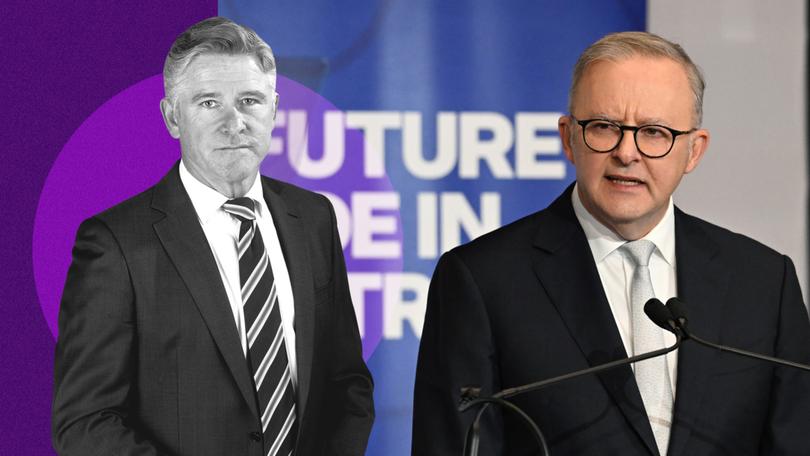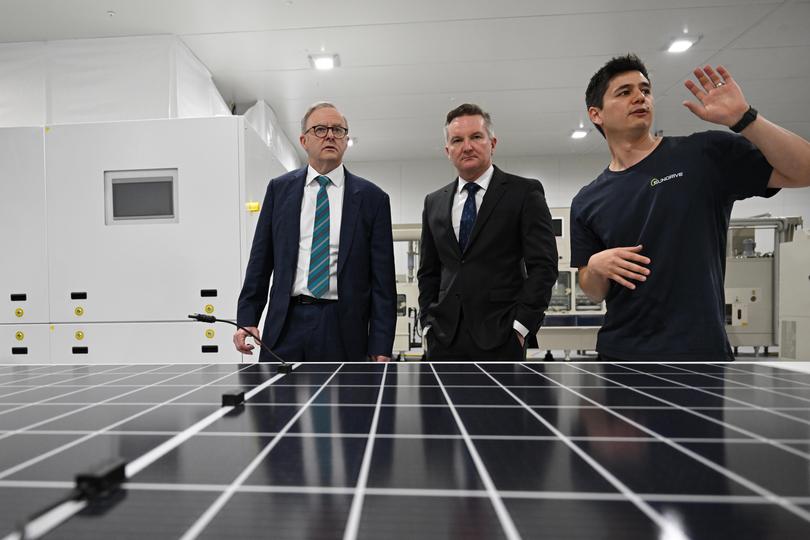MARK RILEY: The Prime Minister is eyeing off a future in which Australia is a maker of stuff

As vice president to Ronald Reagan in the 1980s, George Herbert Walker Bush grandly claimed to be in possession of a mystical political quality he called “the vision thing”.
He defined it as an overarching narrative about where he wanted to take the country and the future he wanted it to dominate.
This grand exposition was seen in the Washington establishment as a valiant attempt to shake off the prevailing image of George Bush Sr as a rather bland and myopic character.
Sign up to The Nightly's newsletters.
Get the first look at the digital newspaper, curated daily stories and breaking headlines delivered to your inbox.
By continuing you agree to our Terms and Privacy Policy.It didn’t work.
But the term soon slipped into the Australian political vernacular.
Prime minister Paul Keating embraced it in the 1990s to describe his view of an Australia built on open markets and free enterprise, forging its future as an essential player in Asia.
Keating’s “vision thing” lost out in the 1996 election to John Howard’s alternative view of a nation that was “comfortable and relaxed”.
On Thursday, Anthony Albanese laid out a new vision.
It is one of an Australia that makes things. And not just any things. It is an Australia with a sovereign capability to compete with the world in solar, hydrogen, batteries and other clean energy and advanced manufacturing.
Albanese’s vision is less comfortable and relaxed and more competitive and low-taxed.
He laid it out in a speech to the Queensland Media Club on Thursday, titled “A Future Made in Australia.”
That is a theme he has been developing since taking over the Labor leadership from Bill Shorten in 2019.
It is a future built on a strategic transition from a nation that digs stuff up and sells it to the world to one that also competes with that world by exploiting its own resources to produce Australian-made goods.
Albanese says, none too subtly, that this is a race. A global race.
Australia has limited time to capitalise on its access to natural resources and national ingenuity to establish itself as a major player in the fast-evolving international marketplace.
Albanese says he will do that through an all-encompassing “Future Made in Australia Act,” which will pull together all the disparate elements of the Government’s new economy support programs under one umbrella.

In essence, it will be a strategic competitor to the US President Joe Biden’s Inflation Reduction Act, which has acted like a giant vacuum cleaner on global capital markets, sucking up billions in international investment through generous incentive programs to help America reach its net zero technology targets.
The European Union, Japan, Korea and Canada have all developed their own economic security strategies to compete with the IRA.
Albanese’s version will combine the National Reconstruction Fund, the Solar Sunshot and Hydrogen Headstart programs, Critical Minerals Facility, the National Skills Agreement and other initiatives into one cogent and cohesive package.
The objective, as Treasurer Jim Chalmers has put it, is to provide a single “front door” for investment into Australia’s advanced manufacturing industries and green metal, hydrogen and clean energy sectors.
And, it will dovetail with the Net Zero Economy Authority, which has been designed by former climate and energy minister Greg Combet to help the workers of the sunset industries of coal and iron ore transition to the sunrise jobs of the new economy.
To put it simply, it seeks to reassure the little people that they will have a valuable place in the emerging big picture.
It will also send some sharp policy signals to the States, which can be a little slow on the uptake in implementing the sort of parallel reforms needed to ensure national projects don’t get bogged down in provincial red tape.
Albanese warns that while Australia faces a world of unlimited potential, its time to prepare for it is extremely limited.
The new economic landscape will also demand a new approach from Government.
“In this time of transformative opportunity, our Government will not be an observer or a spectator. We will be a participant, a partner, an investor and an enabler,” Albanese said yesterday.
And that, he suggests, is how he intends to remain clear-eyed about his version of “the vision thing.”

